EcoFlow
EcoFlow| Power Kits Power Hub
EcoFlow| Power Kits Power Hub
Couldn't load pickup availability

EcoFlow Power Kits are the world's first integrated, plug-and-play power solutions designed especially for tiny homes and RVs.

I want power for…
Vans/RVs/Trailers
Customizable Kits for Any Van Size
Whether you’re replacing your van’s electrics or building a system from scratch, Power Kits plug-and-play system allows you to easily modify your hardware to fit your van and power needs. 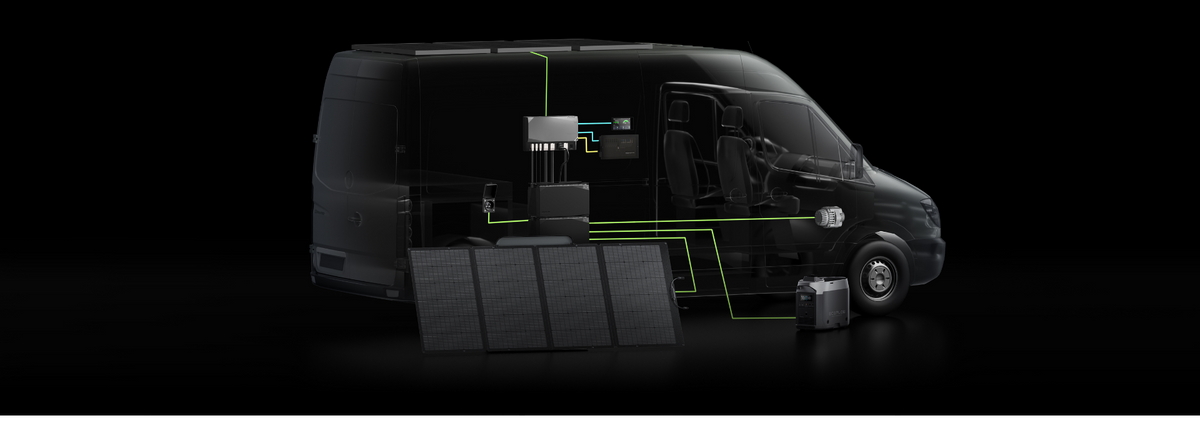
Off-grid Builds
Kits for Any Cabin Size
From tiny home to off-grid cabin, you can adjust your kit to fit any size build.

Find The Battery Stack That Fits Your Power Needs

Powers All Your Essential Appliances
Multiple Ways to Stay Powered
You might live off-grid, but you still rely on power. Get multiple methods of charging using a combination of rigid, flexible, and portable solar panels and our Smart Generator if you’re in a jam.
4 Charging Methods
You might be on the road, but there are plenty of ways to charge, and fast. We’ve designed a new range of rigid and flexible solar panels giving your van a solar input of up to 4800W*. Use your alternator to recharge with 1000W. Spending the night on a campsite? Then take advantage of shore power for an extra 3000W. Caught short? Rely on our Smart Generator for emergency backup.
*Tested using a production model in a closed environment with favorable conditions. Actual results may vary depending on environment, usage, and firmware version.

Setups Made Simple
Simply Assembly
We made our modular system plug-and-play so you can quickly customize your van power whenever you want. Simply stack a battery to increase capacity, or plug in a solar panel for faster charging.
We’ve got experts on-hand to guide you through the installation process or put you in touch with authorized and reputable installers.
Compact &
Integrated Design
Unlike other RV power solutions, Power Kits combine five components into one Power Hub that deals with all your power needs, saving you space, money, and set-up hassle. Our 2 and 5kWh batteries securely stack in threes, giving you an expandable capacity of up to 15kWh.

Space-Saving Solutions
To save your valuable space, we shrank down the traditional power kit, integrating components, using thinner wires, and creating a unique stackable battery. Conveniently conceal the Power Hub, batteries and other accessories so they’re out of sight, under seats or in a closet.
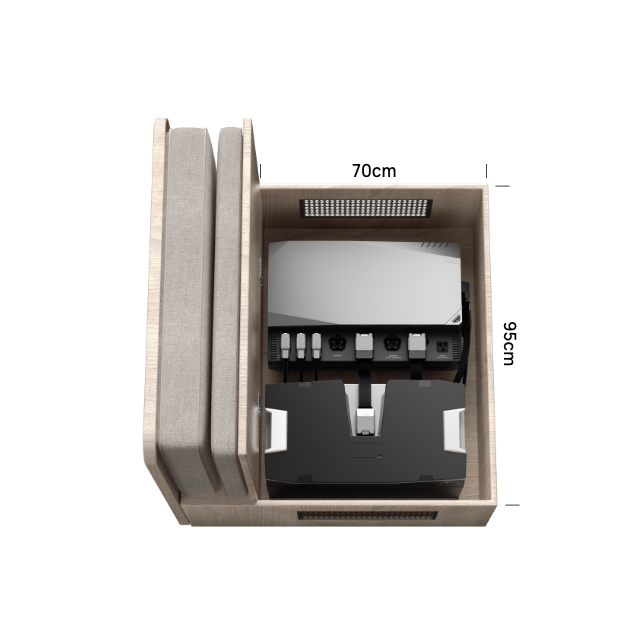
48V, A Faster, Smaller Power Solution
Power Kits offer you a safe, 48V power solution for your van. A 48V system produces the same amount of power, but unlike 12Vs, only a quarter of the electric current passes through the wires, producing significantly less heat and power loss.

Smart Controls
Keep an eye on your energy at home and on the go with a whole host of setting options and real-time data tracking accessible from the app and Power Kit Console.


Power Kits Components and Solar Panels
Power Hub
Five Electronic Essentials in One
We combined all the essential 48V components into one Plug-and-Play Power Box. With fewer wires and modules, it's 5 times faster to set up, saves masses of space, and your wallet too.
Power Hub has a 3600W output, and includes two MPPT Solar charge controller, a DC-DC battery charger with MPPT, an inverter charger, and a DC-DC step-down converter. Everything you need to power your tiny home or van.
LFP Batteries
Stack & Store Energy
Available in two sizes, both 2 and 5kWh stack up to 3 for a capacity of up to 15kWh. Integrated BMS protects the batteries from operating beyond their capacity by monitoring temperature, voltage, and current, keeping your home and system safe. With built-in auto-heating, you can use the batteries safely in temperatures as low as -4°F.
Solar Panels
Mix & Match Size, Type & Solar Input
Plug in a combination of rigid, flexible, and portable solar panels for an input of 4800W. As well as our existing range of portable panels, we’re adding a 100W flexible and rigid solar panel as well as a 400W rigid option to our Power Kits range.
*Solar panels sold separately.
Check the Solar Panels

What's included in Power Kits
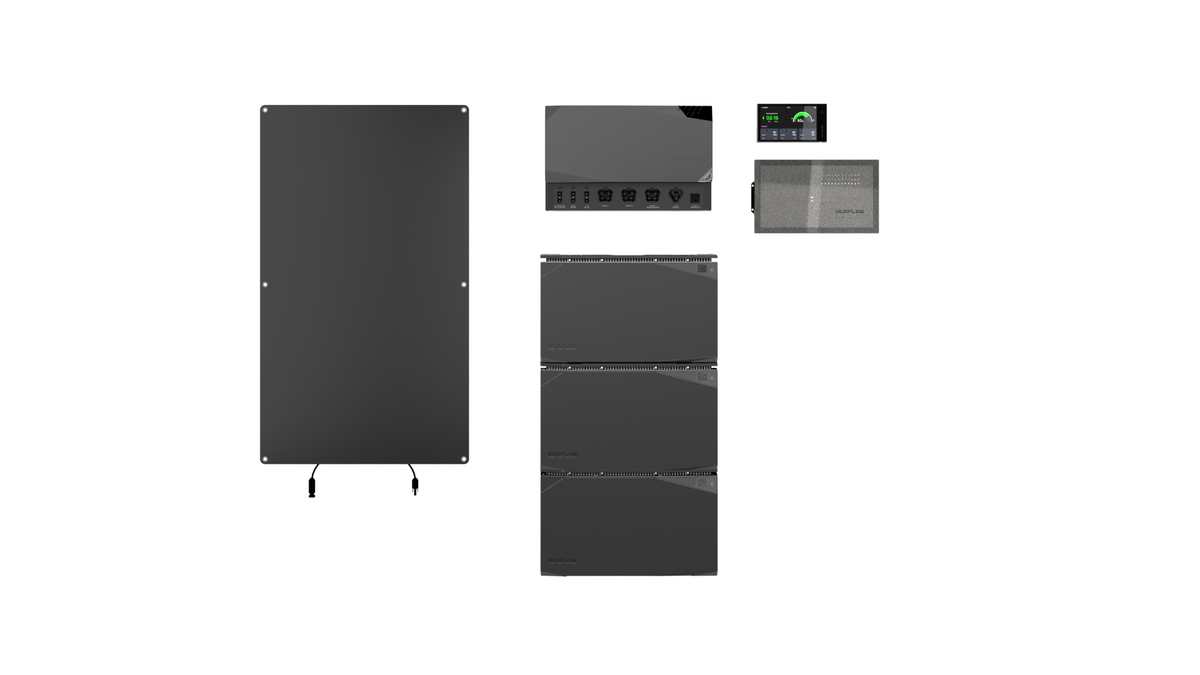
Tech Specs
Power Hub

|
Net weight (lbs) |
31 |
|
Net Weight (kg) |
14 |
|
Dimension (inch) |
11.8 x 18.9 x 5.5 in(Height x Width x Depth) |
|
Dimension (cm) |
30 x 48 x 14 cm (Height x Width x Depth) |
|
Tests and Certifications |
UL Standard, FCC,ICES |
|
Wi-Fi |
✓ |
|
Bluetooth |
✓ |
|
Mobile App |
✓ |
|
AC Main Output/Frequency |
Pure Sine Wave, 3600W (Surge 7200W), 120V, 50Hz/60Hz |
|
DC Main Output |
13.6V/70A 1000W Max; 26.4V/60A, 1600W Max |
|
AC Main Input |
X-Stream Fast Charging 3000W Max, 30A Max |
|
AC Main Input Voltage/Frequency |
100-120V, 50Hz/60Hz |
|
Solar Charging Input |
15-150V 30A, 1600W Max |
|
Alternator Charging Input |
13V-60V, 60A, 1000W Max |
|
Operating Temperature |
-13°F-140°F |
|
Discharge Temperature |
-13°F-140°F |
|
Charge Temperature |
-13°F-140°F |
|
Storage Temperature |
-13°F-140°F |


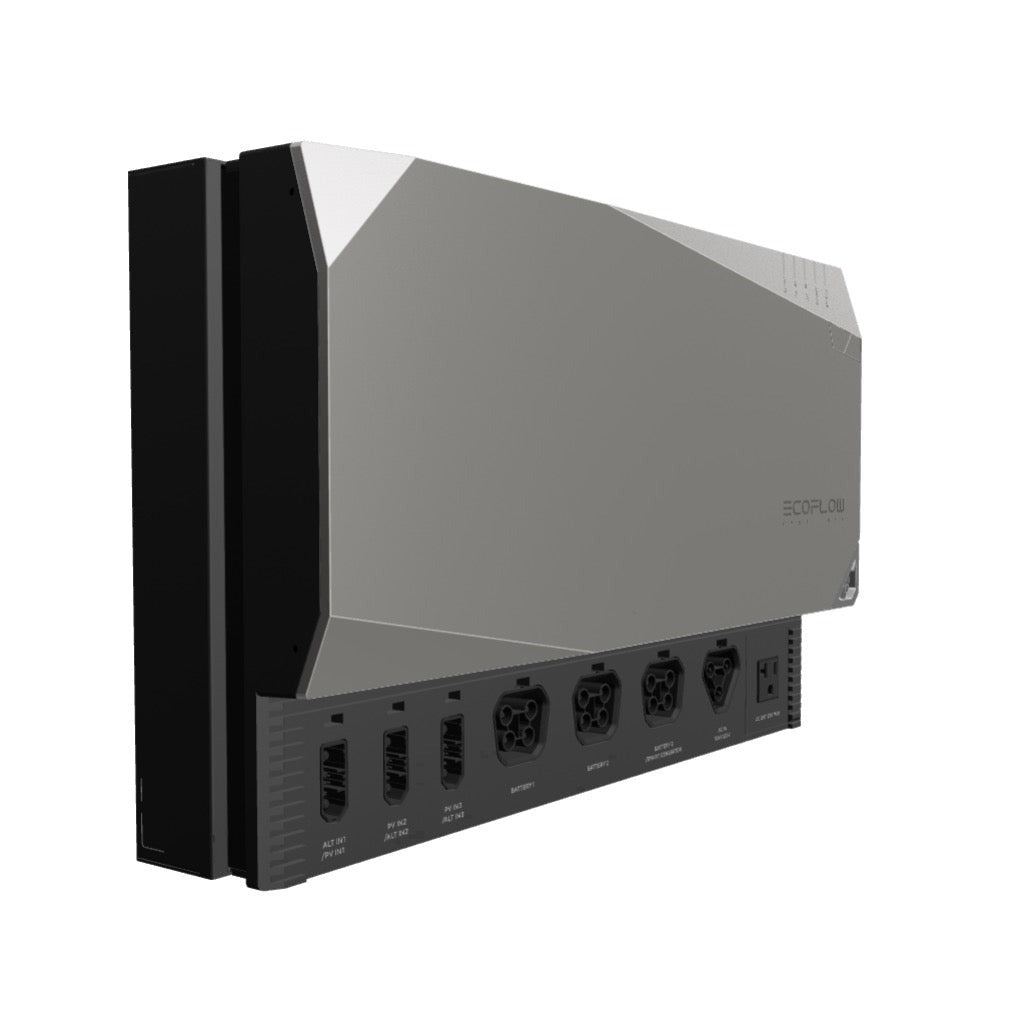
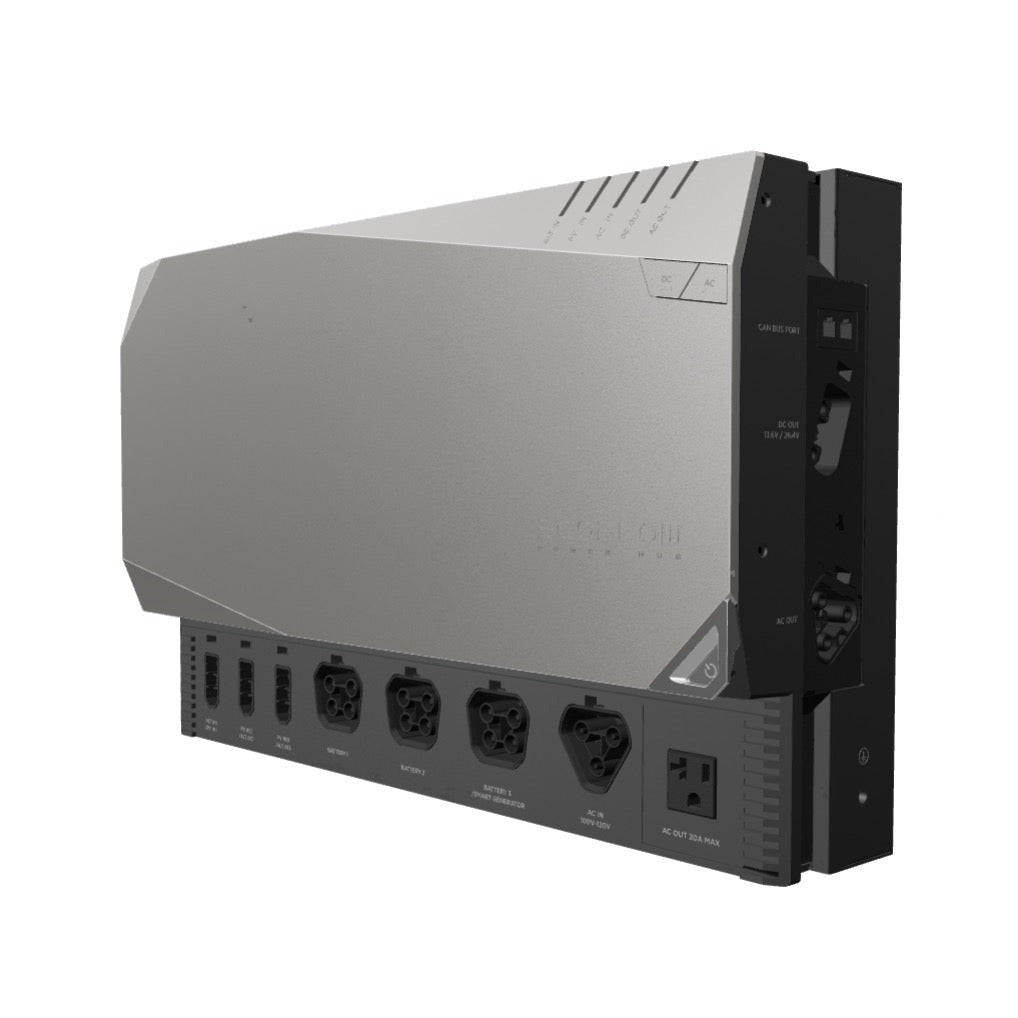
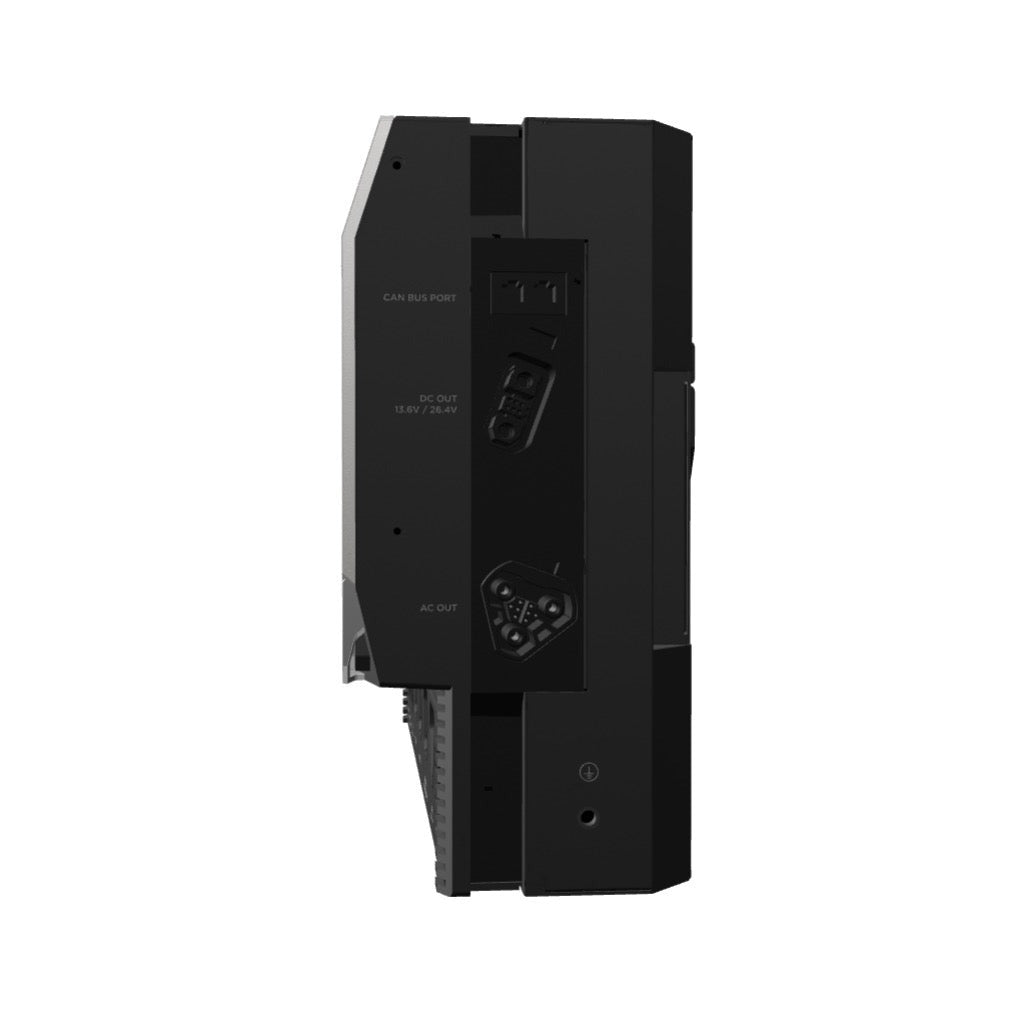
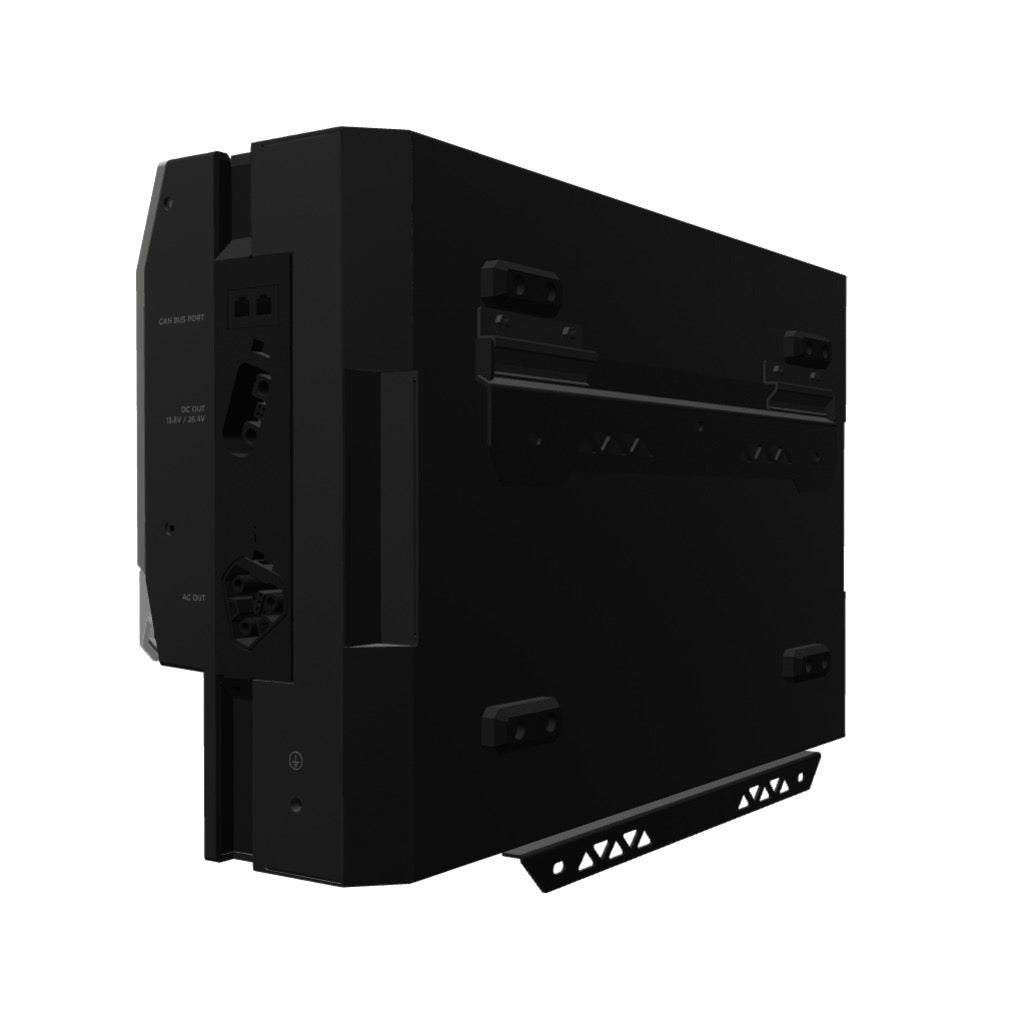
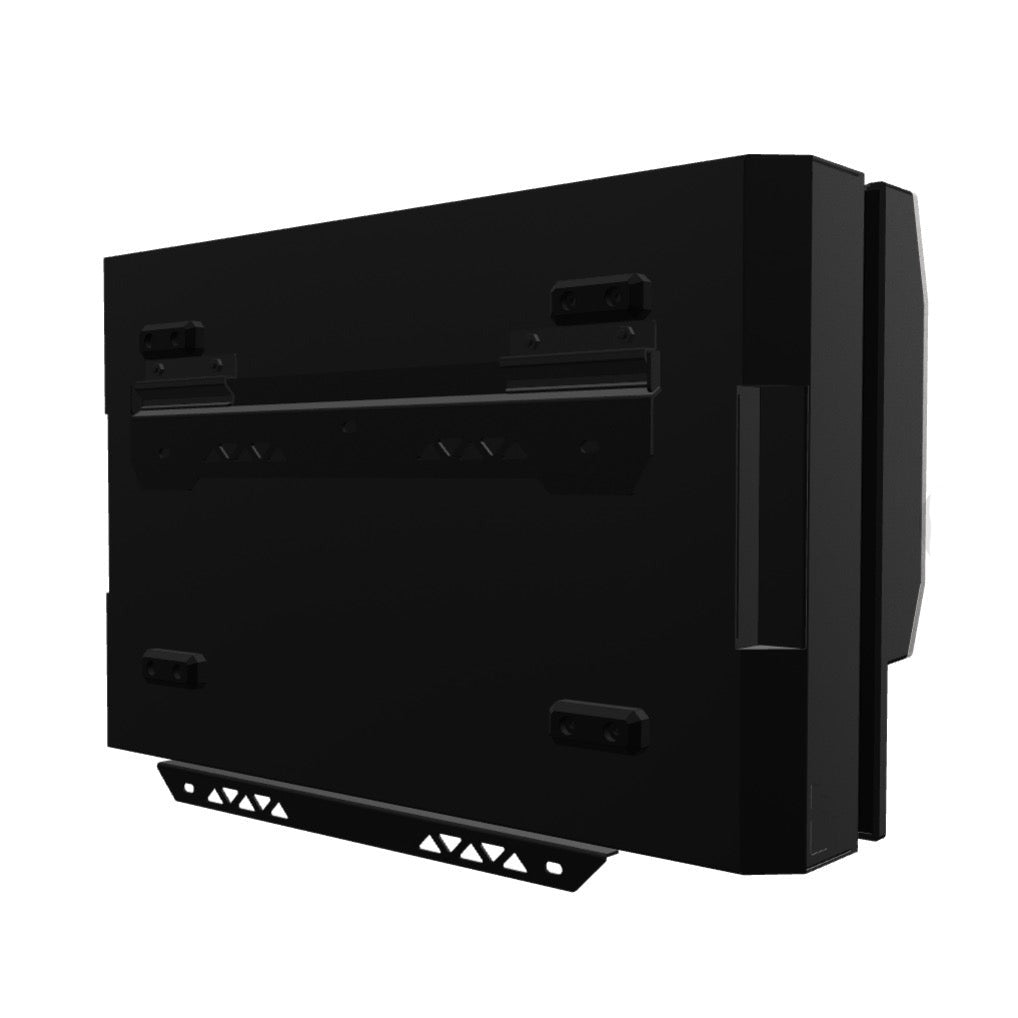

EcoFlow Power Kit 4 Charging Methods
FAQ
Can I use my own non-EcoFlow batteries?
Power Hub is not compatible with third-party batteries.
How many DC circuits can the 30A/50A AC/DC Smart Distribution Panel control?
It can control 16 circuits, max. 30A for F1–F13, and max. 50A for F14–F16
Can a 30A/50A AC/DC Smart Distribution Panel connect to 120V/240V AC?
Yes. The input specification is max. 50A, 120/240V, 60 Hz.
What is purpose of the Power Dock Battery 3-pin port/Multi Connection? row
1. Connect batteries in parallel
2. Connect an EcoFlow Smart Generator to recharge the system
3. Connect an EcoFlow Delta Pro Smart Extra Battery/Delta 2 Max Smart Extra Battery
What does Power Dock do?
1. Three batteries connected in parallel can be connected to a Power Dock connected to one port of Power Hub.
2. There are two DC outputs that can power 48V appliances. The specification is 40–60V⎓55A and the app or Power Kit Console can be used for control and data monitoring.
3. Connect an external manual switch to disconnect the 48V DC connection between the battery and Power Hub.
Does Power Hub have GFCI protection?
The user can connect an external GFCI protector if required. The internal GFCI function of Power Hub 5kVA is always on and no special operation is needed to enable GFCI protection.
What is the temperature range for normal operation of Power Kits?
Optimal operating temperature: 20°C–40°C
Optimal recharge temperature: -25°C to 60°C. Recharging starts to derate above 40°C.
Optimal discharge temperature: -25°C to 60°C. Discharging starts to derate above 40°C.
Power Kits update precautions
Use Power Kit Console for synchronous updating of Power Hub and Power Kit Console. If you use the app to update, Power Kit Console cannot be updated, so we recommend using Power Kit Console to update.
Power Hub installation precautions in a confined space
Be sure to install a cooling fan when installing Power Hub in an enclosed space, so as not to compromise the performance and service life of Power Hub.
Power Hub installation precautions
Drill holes before installing the upper and lower brackets. Ensure that no metal filings or dust get in the device, as these can cause short circuits.
Collapsible rowPurpose of power grid priority
This prevents a poor-quality power grid from affecting appliances when power grid quality is variable. Turning off grid power priority puts it in inverter priority mode, safeguarding output power quality.
X-Fusion (Power Assist)
When in bypass mode (when you recharge and discharge simultaneously, the device automatically enters bypass mode), the X-Fusion feature ensures that all AC output sockets supply optimal power and current.
Can Power Kits be used as UPS?
No. UPSs have a transfer time of 0–20 ms. Power Kits currently take 30 ms and can only serve as EPS.
Can the EcoFlow App monitor and control recharging?
Use the EcoFlow App to monitor energy use, recharging input and to adjust settings, error alarms, etc. Console can also be used to monitor and control Power Kits.
How does Power Hub detect vehicle motion?
Power Kits can utilize a vibration sensor to ensure recharging only occurs when the vehicle is in motion in order to safeguard the vehicle battery.
Default voltage protection is set to 13V (or 26V/52V depending on the battery specification of the alternator). Turn off the idle recharge switch once the vehicle ignition is off if you wish to maintain the vehicle battery close to 14V.
Priority of the three recharging modes (PV, ALT and AC)
PV>AC>ALT>Smart Generator. Lower priority sources for recharging automatically stop working when the recharging power exceeds what the battery needs to recharge.
Battery heating
Manual discharge heating function: Manually discharge and heat the battery via the Console or app when the battery temperature <0°C and SOC>50%. When the battery SOC ≤ 30% or the battery temperature is higher than 10°C, the battery discharge heating is automatically switched off.
Automatic recharge heating function: Automatic heating on recharge
In order to extend the battery life and maintain optimal performance, it will continuously heat the battery up to the optimal operating temperature automatically (BP2000 — 18°C, BP5000 — 23°C) when there is sufficient input power (>250W is needed to heat a battery). The battery charge heating is automatically switched off when power is insufficient for heating so as to prioritize recharging.
What is the maximum DC output of the Power Hub battery port?
40–57.6V⎓55A
What is Power Hub's maximum bypass current?
50A
What is Power Hub's maximum recharging power?
ALT1 & PV1: 4000W
ALT2/3 & PV2/3: 1600W
AC: 4000W
The maximum recharging power for the device as a whole is 11kW












